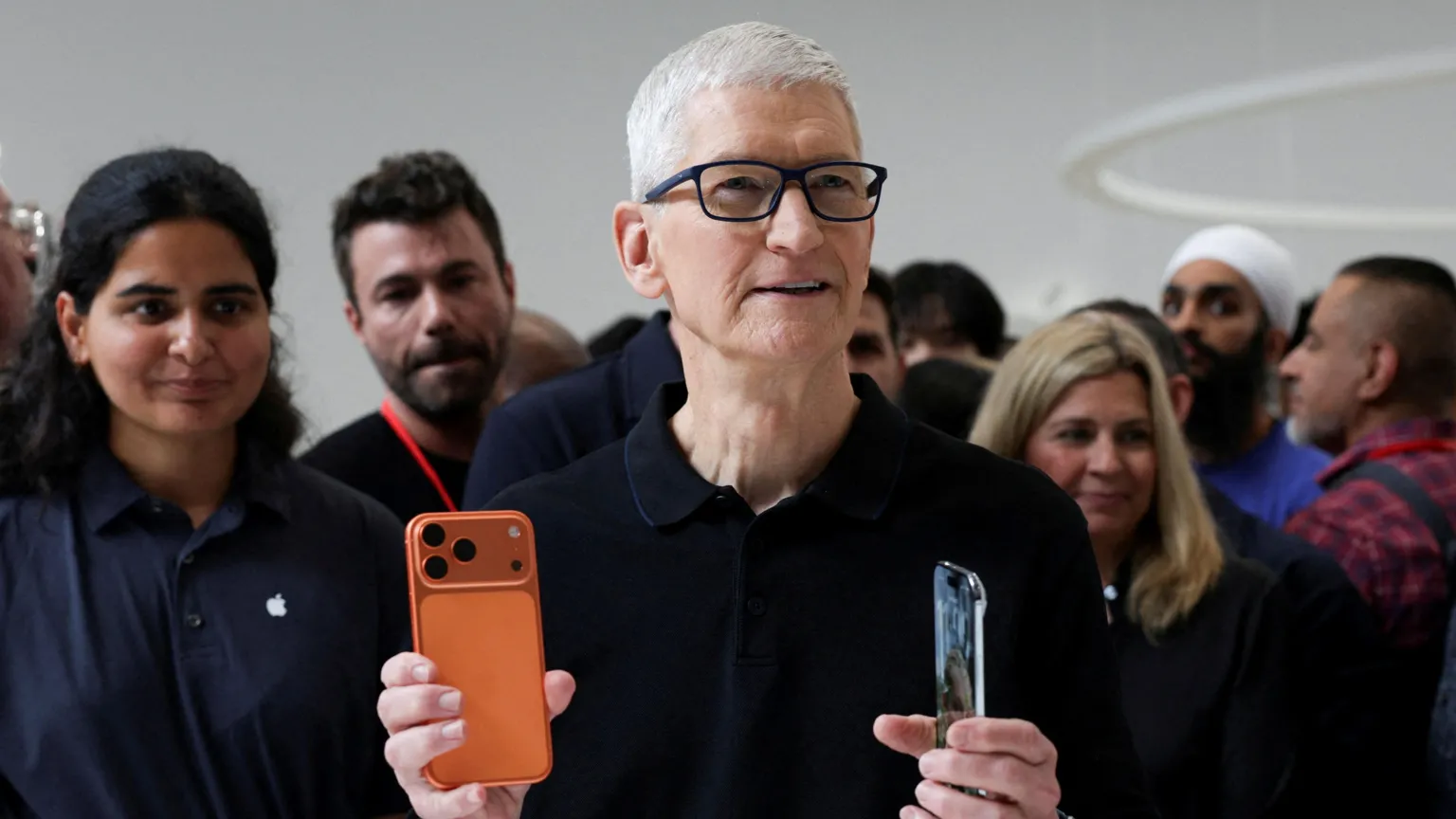Copyright forbes

Survival of the Fittest AIMatters, Inc. At heart, I am an optimist about business, humankind and even the environment. I am not a geek nor a fan of science fiction. But I also believe that for as long as Earth has been around (4.5B years) there has been a battle for natural resources among the fittest in order to survive. Until now, mankind has won. But times are changing. Mankind has begun to manufacture, in massive facilities (aka data centers), a new, artificial species at incredible speed and expense. And this new species requires the same natural resources as we do – air, water and energy – to survive and grow. It’s called Artificial Intelligence (AI) and we are just beginning to understand it. In time, it will be more than just intelligence; it will become a full representation of us as robots. The only question: are there enough natural resources for us both? Let’s look at the emerging facts. Big is an Understatement From space (an altitude of about 155 miles), astronauts can see many objects on Earth if they know where to look. With binoculars they can even see the interstate highway system, a network that cost $500B (in today’s dollars) to build. It’s an astonishing amount, I know, yet one that will soon be surpassed by the money now pouring into data centers. The Interstate Highway System AIMatters, Inc. In fact, today’s hyperscalers have committed more money in just three years to AI data centers than it cost to build the entire interstate highway system over 40 years. One example is Meta’s planned ‘Hyperion’, a 5GW facility in rural Richland Parish, Louisiana. To illustrate just how big this data center is going to be, Mark Zuckerberg, Meta’s CEO, shared a graphic overlaying his new facility on a map of Manhattan. Large would be an understatement. Hyperion Data Center by Meta AIMatters, Inc. MORE FOR YOU To put this in context, assuming the blue graphic representing Hyperion is half the length and half the width of Manhattan, that would make it 6 square miles, or about three times the size of the largest town in Richland Parish. In terms of volume, the building would encompass nearly 200 billion cubic feet, making it a thousand times larger than Tesla’s Gigafactory or Boeing’s Everett Factory — currently the largest structures in the world. But That’s Not All In addition to Meta, the tech industry is spending more money developing artificial intelligence (aka data centers, which are simply today’s factories for manufacturing artificial intelligence) than we invest in hospitals, schools, hotels, transportation and recreation. US Business Investment in Data Centers AIMatters, Inc. In addition, the big four hyperscalers are spending more money on data centers than has been spent on telecom and oil exploration during their peaks. 2024 Capex from Hyperscalers CapEx Investment by Big 4 Tech Firms Finally, Oracle, OpenAI, and SoftBank have unveiled Star Gate, a Central Park–sized complex in Amarillo, Texas. Together, they’ve announced plans to build roughly a dozen more, with a total projected cost of around $1 trillion. Maybe that’s an overstatement, maybe not. Maslow and the Hierarchy of Needs Nearly 100 years ago, Maslow portrayed the hierarchy of needs – with substance and structure at the bottom and self-actualization and knowledge at the top. One might argue that AI sits at the top – enabling us all to fully realize our true potential (self-actualize) while energy, water and other natural resources sit at the bottom. Using Maslow’s triangle, let’s look at the bottom – physiological sustenance. Maslow's Hierarchy AIMatters, Inc. 🔌 Energy / Electricity In the U.S., data centers consumed about 176 terawatt‐hours (TWh) of electricity in 2023, which was around 4% of the nation’s total electricity consumption. Projections indicate that this number could triple to 12% of our power usage in the US by 2030 as we build ever larger and more consumptive GPU based data centers. Nearly 50% of usage comes from the chips themselves (before today’s large GPUs are installed). Time will tell. Large data centers are water hungry facilities, using up to 5 million gallons per day, equal to what a town of up to 50,000 people use. Only 3% of Earth’s water is fresh water and only one-sixth of that total is available for human consumption. According to one research report, each 100-word AI prompt uses approximately one bottle of fresh water, but remember, there are now 800M ChatGPT users worldwide. Imagine all those bottle of fresh water. 🌬 Air/Greenhouse gases According to recent research, greenhouse gas emissions from AI are 7.62 higher than once thought. In a recent study of data centers in Texas, a 10 MW facility was estimated to generate ~37 thousand metric tons of CO₂ annually (from electricity + equipment + backup generators) and emitted NOₓ during generator testing that degrades local air quality. The hyper-scalers had all wanted to become carbon neutral by 2030, but with the advent of AI, these objectives appear to be a pipe dream. 🌬 Rare Earth Materials and Critical Elements Minerals like Gallium, Germanium and Arsenic are widely used in building data centers and almost entirely sourced from China, a source of current friction between the US and China in our respective quests for AI dominance. Precious metals such gold and silver (64% imported) are also critical along with copper, tantalum, lithium and cobalt to name just a very few and many of these, and other minerals, are exported to the US from emerging nations. By 2040, rare earth demand is expected to quadruple. With China having a rare earth supply chokehold, the race is on to diversify to ensure this emerging industry’s future. This is Just the Beginning The amount of natural resources - rare earths, minerals, metals, energy, water, air, electricity, and capital - being poured into AI’s ascent is breathtaking. Global spending on AI technology is projected to reach $375 billion by the end of 2025 (this year) and half a trillion dollars in 2026. Quarterly Capex by Big 4 AIMatters, Inc. The funding is clear: Three-quarters of the gains in the S&P 500 came from AI-related stocks since the launch of ChatGPT; the value of every publicly traded company has, in a sense, been buoyed by an AI-driven bull market. Barely 20 years ago, Exxon Mobile was among the most valuable companies in the world. Today, Nvidia is 10X more valuable than the energy leader of 20 years ago, and AI-related spending contributes more to the nation’s GDP growth than all consumer spending combined. Further, by another calculation, AI expenditures accounted for more than 90 percent of GDP growth during the first half of 2025. Trillion Dollar Performance Since ChatGPT AIMatters, Inc. It's Time to Innovate and Collaborate As I stated at the beginning of this article, I am an eternal optimist, but I am also a realist. I am a member of the AI movement – both as an operator, investor and advisor (remember, the name of my firm is AIMatters). I have written repeatedly on the topic of AI since 2017, and I don’t believe a new artificial species (starting with intelligence) will take over our world the way it does in the Matrix or other sci-fi movies. But I am concerned that if we are not careful, humanity may find itself competing with an artificial species PacMan for our planet’s natural resources. AIMatters, Inc. There is precedent for thinking this way which may or may not be relevant, depending on your point of view. To state it simply: our planet has been through five mass extinction events, starting about 440 million years ago. The worst was the third extinction, which took place around 250 million years ago and wiped-out more than 95 percent of life on Earth. Now I am not suggesting that artificial species (intelligence and robots) will wipe out humans, but I am advocating that we — as investors and customers of AI — need to look beyond the financial gains today’s stock market has created for us all, and ask ourselves the following: How do WE use this very exciting new technology to reduce its exponential use of natural resources so that both it and WE can survive? What new innovations can WE deploy that make the manufacturing of artificial intelligence more efficient, sustainable and aligned with the needs of our Earth? How do WE all work together to ensure our collective best interests are served as this new species doubles (or more) every 18 months (Moore’s law)? Experts believe that a sixth mass extinction is on its way. Estimates vary, but up to 150 species die every day, and between 30% to 50% of all existing species will be extinct by 2050. And these estimates were all made before the advent of today’s newest, and highly consumptive creation – artificial intelligence. These are surely untested and exciting times, but unlike a meteorite being the cause for our potential Sixth Mass Extinction, this one could be of our own making. In that case, WE will have only ourselves to blame. As such, it’s time to start planning, innovating and partnering with this new artificial species to find a way forward before we exhaust our natural resources and this newest artificial species becomes, quite literally, the fittest of them all. Editorial StandardsReprints & Permissions



